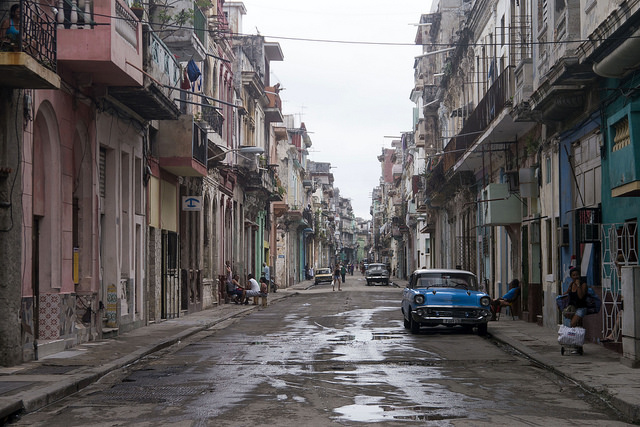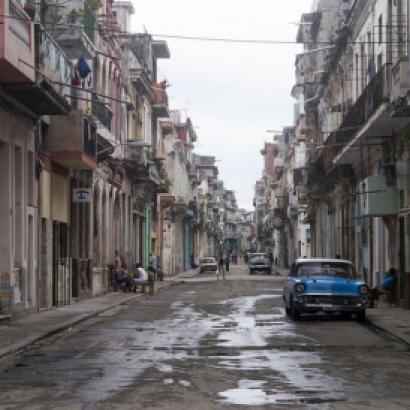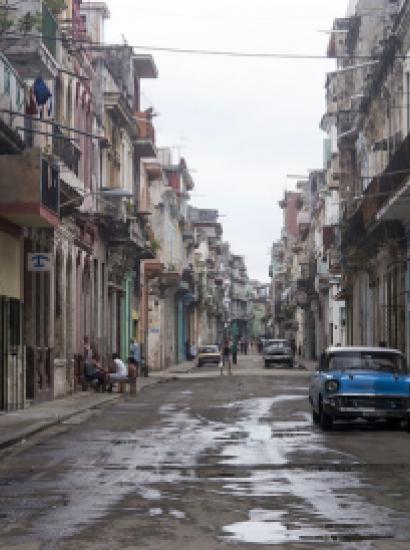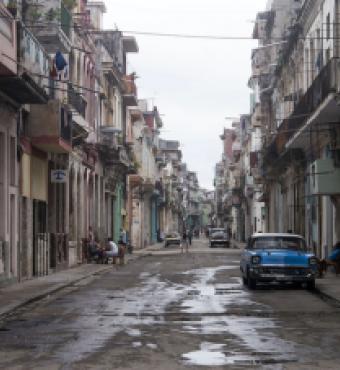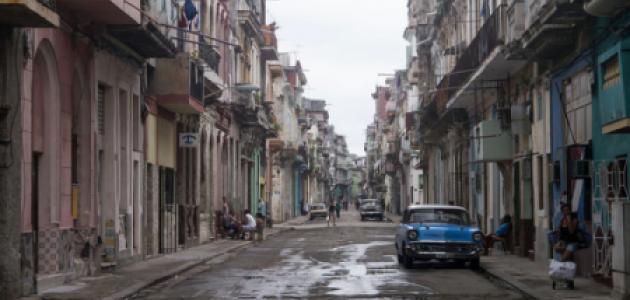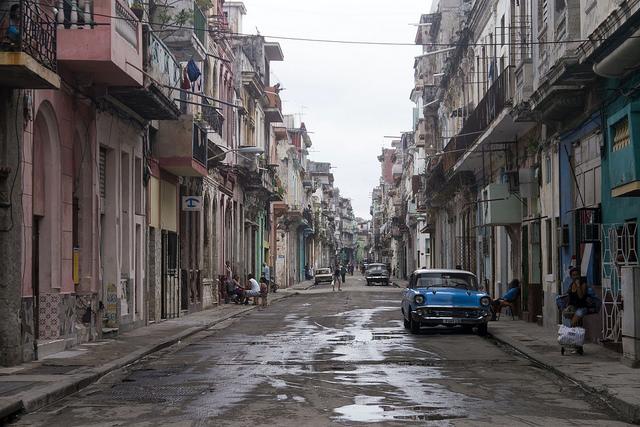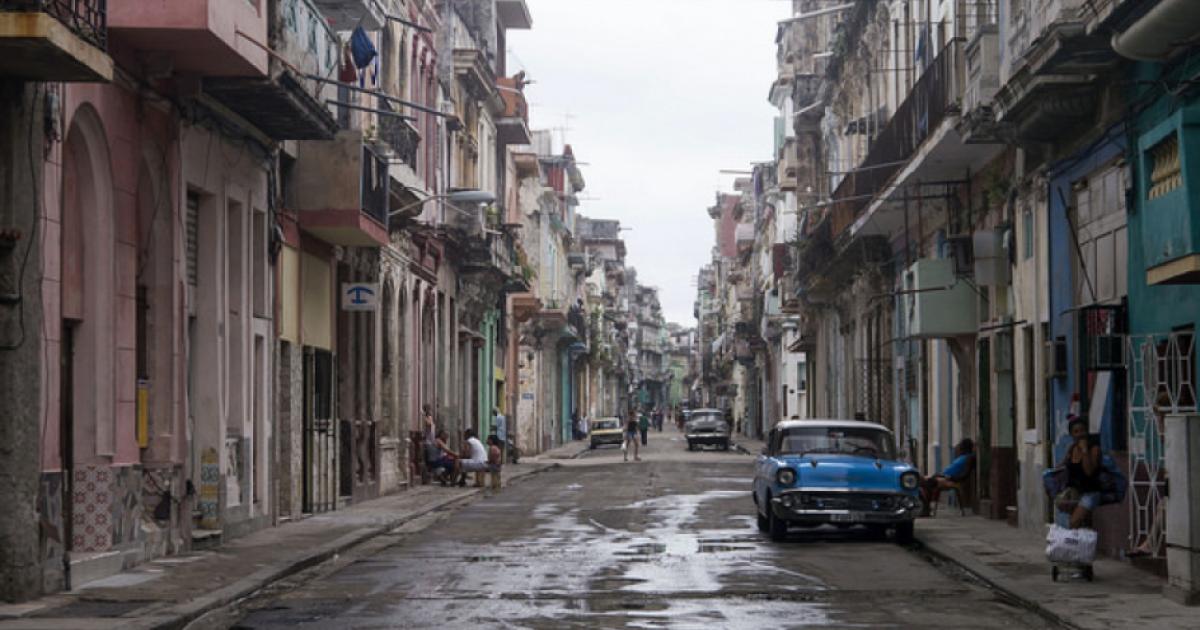When you’re in Havana, you can stand at the harbor and survey the entire ocean horizon without seeing a single ship. No fishing trawlers, no speedboats, no yachts, no jet skis. As my guide diplomatically put it, “The government fears they will fish too far.” Boats are prohibited to Cubans because they’d likely make a run for Florida.
After President Obama’s opening of diplomatic relations, the whole country feels like it’s holding its breath, waiting for three momentous events to occur: first, “the biological solution,” by which they mean Fidel Castro’s death; second, an end to the American embargo; and third, the end of Raul Castro’s presidential term in 2017, with the possibility of military rule after it.
The revolution has been indistinguishable from the Castro brothers; there are no natural successors. There is a civilian Vice President, generally well regarded. But Raul Castro has been elevating the military, which is considered the best-managed and most stable state entity. Officers also serve outside military ranks, staffing civilian roles as lawyers and engineers. They head eight of 27 government ministries and comprise 50 percent of the Politburo. Former CIA analyst Brian Latell considers military successors to Castro the likeliest path, but does not rule out that the military, with all its perks and privileges, will turn its back on the revolution: “The generals,” he writes, “will either dominate a praetorian successor regime after Fidel Castro dies or is incapacitated, or, like the militaries in the former communist countries of Eastern Europe, be the willing accomplices in the demise of Marxism.”
Since Fidel was replaced at the country’s helm, Raul Castro has allowed capitalism to tiptoe back into Cuba: self-employment is now possible (although not in professions like medicine or law), foreign investment is encouraged (but with restrictions on ownership and operation that make it deeply onerous), and Cubans seem to think being 90 miles off the coast of Florida makes the island a preferred port for trade and transport. But only state-owned enterprises can enter into economic agreements with foreigners. The army controls 60 percent of the economy, including the tourist industry. Aspirations for foreign investment far outstrip actual inflows, and it will likely remain that way unless the Cuban government brings its legal frameworks and business practices into line with international standards. Still, the biggest mystery is why Fidel has allowed his brother to change course so radically.
Raul Castro’s policy choices make eminent economic sense, though: when the Soviet Union collapsed in 1990, the lifeline of subsidies that were Cuba’s sole support was severed. Price controls deformed the market for goods and services that Cubans did produce. Now Cuba looks to have an artisanal economy: virtuoso mechanics, for instance, build car parts by hand, but there appear to be no mechanical industries. Venezuela stepped into the maw while oil prices were high, but now the term “venezuelanize” means to make vulgar or cheap. The Cuban government does not want to think about Maduro’s Venezuela as the natural trajectory of a country after its charismatic revolutionary dies. Fidel may be too senile to object, but he does get wheeled out to support the measures that have a real prospect of overturning his socialist revolution.
Cuban political humor is every bit as good as you’d expect in so vibrant a culture. My favorite joke among the locals: Fidel Castro finally dies, packs his luggage, and shows up at the Pearly Gates. St. Peter tells Castro to go to Hell. When he gets there, the Devil welcomes him. But Castro realizes he left his luggage in Heaven, and tells the Devil that he’ll run back and get it. The Devil says, “that’s not how this works…” But as a courtesy to a fellow diablo, Satan offers to send a couple of apprentices back for the luggage. Peter sees them approach the gates and cries out, “Castro’s only been in Hell twenty minutes, and there are ALREADY refugees?!”
The other wonderful joke is in reference to the statue of Jose Marti outside the American Embassy, erected during the Elian Gonzalez dispute. Marti shelters a child and points accusingly at the Embassy, which Cubans joke is the hero of Cuban independence showing its children where to get a visa.
The saddest sight I saw in Cuba was an amusement park, the Coney Island. All the rides were broken and had been for decades, yet kids still went there. While a socialist revolution may have higher priorities, fixing a roller coaster isn’t a major engineering feat—it’s not like landing a rocket on its launch pad. Another sorry sight was the Malecon, Havana’s seaside boardwalk. Its concrete is so badly eroded that it can bruise a runner’s feet. Modern amenities, common even in underdeveloped countries, are lacking outside of the handful of European hotels. Like so much else in the decrepit capital, the Coney Island and the Malecon are a reminder of the laws of economics.
Cuba’s per capita GDP is $6,051, between Botswana’s and Iraq’s. Brazil has twice the per capita income, Mexico one-and-a-half times. A third of Cubans receive up to $8,000 a year in remittances from relatives in the United States, totaling about $2 billion. But for context, Mexico receives $25 billion in remittances. Universal free medical care is the much-touted achievement of the Cuban revolution. And Cuba has more doctors than Denmark. But it also had the best medical system in Latin America before the revolution; now, the UN Human Development Index rates it equal to other Third World countries.
More generally, Cuba has lagged behind other Latin American countries since the revolution. Cuba ranked between 2nd and 4th among Latin American countries in the World Bank development standings after 1953; it placed between 9th and 11th in 2007. Moreover, Freedom House rates it the least free country in the Western hemisphere, with “a record number of politically motivated detentions” in 2014. It scores 3 out of 16 for rule of law, with corruption being an enormous problem.
Cuba’s contemporary art speaks to the sense of loss that citizens have felt since the revolution. The modern art museum exhibits a Cuban flag made from locks of hair of people the artist loves who fled the country. Another piece, The Boomerang, is a tribute to artists who fled to the United States and became famous. The artist hopes they will someday return.
Cuba seems to be yearning for glamour—not surprising given the grim realities of its economy, especially in the past 25 years. Grand old hotels are festooned with pictures of Hollywood stars of the 1950s (and the few since who flouted U.S. travel restrictions). Cubans drive meticulously refurbished American classic cars and watch American movies and television shows illegally, which are distributed weekly (with tacit government support) on usb sticks.
It would be easy for Americans to interpret these signs as a yearning for reconnection with our culture, but that’s not quite right. Take the old cars. Those aren’t fashion statements. The economics of the car market make nearly all cars out of reach. East German Ladas go for $35,000—unaffordable when monthly salaries are about $30. People come into car ownership by deaths in the family.
There also seems to be as much longing for the glory days of early Fidel in his military fatigues, with his proud refutation of Yanquis, smoking Cohibas and embodying revolutionary chic. Stands on the plaza outside Havana’s city hall are so weighed down with Chomsky and Che Guevara images that they look like the Oberlin College bookstore.
Which brings me to the uneasy future facing Cuba. Cubans are, of course, wishing for brighter prospects, but they may be overstating the potential of President Obama’s political realignment. The President made the grand political gesture, to his credit. His Havana speech was a rare and important statement of American values, perhaps the high point in foreign policy of his presidency (admittedly a low bar). But he doesn’t appear to be doing the hard work of persuading Congress to lift the embargo.
And Cuba isn’t the cause of any American problems or the solution to them. The likeliest outcome for Cuba is American apathy. In that case, the embargo won’t be lifted or even wither away, and Cuba won’t continue to get special treatment (the 1966 Cuban Adjustment Act gives refugees automatic admission and legal residence after a year). Cubans clearly fear that, too. Emigration figures illustrate their worry most starkly: 26,500 Cubans have come across the U.S.-Mexican border in recent months. They are coming on tourist visas via fellow socialist paradise Ecuador, so many that Panama and Nicaragua have closed their border to Cubans.
Cuba, sadly, won’t become Miami; it will more likely become San Salvador or Tegucigalpa.







